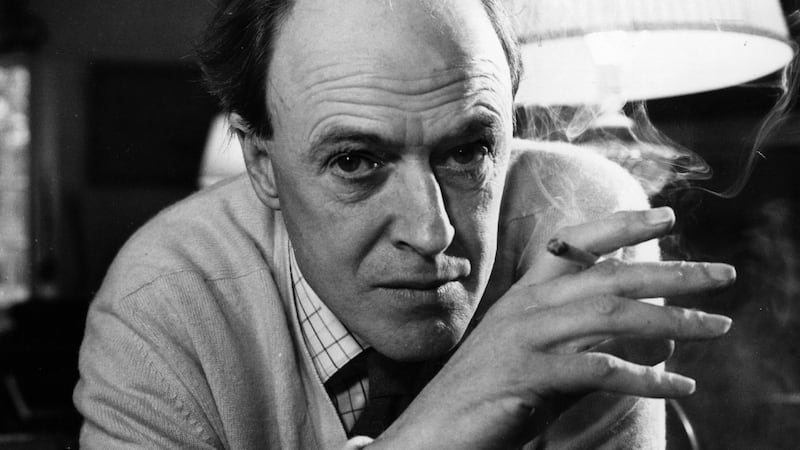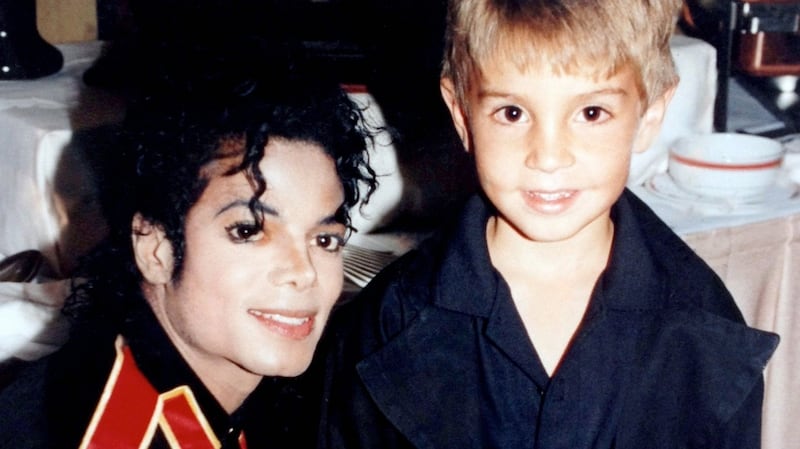When I recently interviewed American author Richard Ford for this paper, one question was bound to come up: his treatment of critics who have given him bad reviews, one of whom was sent a book with a bullet hole in it, another of whom was spat on. Ford’s response was not especially enlightening – he gets asked about this a lot – but it did raise an interesting, secondary question.
On social media and in the interview’s comment section, some readers said they no longer bother with Ford’s books after these actions. Part of this response is likely because what Ford did was so targeted, personal and grotesquely intimate; but writers also lose readers for broader political reasons, and for speech as well as actions.
When Peter Handke won last year’s Nobel Prize in Literature, the commentary in the press was not about the work, but about Handke’s defence of Serbia’s actions in the 1990s Bosnian war. Aside from the damage to the Nobel’s reputation – already on shaky ground – there is an additional loss in that many will no longer want to read Handke, whom John Updike called “the finest writer in Germany”.
0 of 4
But can we really separate the writer from the work? If a book is an expression of the author’s psyche, why would we want to rummage through the dregs and peelings from the mind of someone we find repellent?
Ford and Handke are just this term’s villains. So many artistic heroes have feet of clay that it’s practically part of the uniform. We can start back in our childhood with Roald Dahl.
Dahl, whose books achieve their success through a combination of firecracker language, unfettered imagination, and a consistent belief that good children will triumph over wicked grown-ups, was a pretty wicked grown-up himself. One of his wives called him “Roald the rotten” and he was an unembarrassed anti-Semite: “Even a stinker like Hitler didn’t just pick on them for no reason.”

Dahl’s editors rescued him from racist impulses. Early drafts of Charlie and the Chocolate Factory had the Oompa-Loompas as a tribe of African pygmies, promoting the “happy slave” myth as they merrily toiled and rhymed in Willy Wonka’s factory. For The BFG, his American editor had to tell him that the original description of the Bloodbottling Giant – a dark-skinned flat-nosed creature with “thick rubbery lips” – was a racist stereotype. (Dahl wrote back to him, matter of factly: “The negro lips thing has been taken care of.”)
No one suggests that we should expunge Dahl from our children’s bookshelves – his fizziness makes him a joy to read aloud, and racism doesn’t infect the published work (though reading his worst book, Charlie and the Great Glass Elevator, to my children recently, my tongue tripped up at a horrible joke based on a Chinese stereotype).
If we've loved our stars for decades, we don't want to discard them; we cling to the hope that their acts or words have been misunderstood, or just don't matter
This brings out two key points. First, the quality of the work determines whether we care about an artist being “cancelled”. When Gary Glitter was convicted of child sex offences in 2006 and again in 2015, there were no street protests to assert the right to hear I’m the Leader of the Gang one more time. (There was, in fact, a minor rumble this year when it was feared that Glitter was earning royalties from the use of his song Rock and Roll Part 2 in the movie Joker. He wasn’t, having sold the rights more than 20 years ago. Panic averted.)
The second point is that we will only look the other way if the work permits us to.
Philip Larkin is perhaps the best-loved English poet of the last century. When his biography was published eight years after his death, the man whose most grievous sin was thought to be jazz was found to be, as Clive James put it, not “just a racist, a wanker, a miser and a booze artist, he was also prey, in his declining years, to such nameless vices as conceiving an admiration for Mrs Thatcher”.
Pretty much all of the downside of Larkin’s views can be seen in a piece of doggerel called How to Win the Next Election that he wrote in a letter to Robert Conquest in 1970. It begins:
"Prison for strikers,
Bring back the cat,
Kick out the n****rs,
How about that?"
Irrespective of whether these were really Larkin’s opinions or “just” a tasteless racist joke between friends, the poem is now included in the latest edition of Larkin’s Complete Poems alongside his greatest verses. And his greatest verses – which is pretty much everything he published from the 1950s on – are unimpeachable: grave, beautiful and courteous to the reader. Nobody considering Lines on a Young Lady’s Photograph Album, Here or High Windows should be distracted by what Larkin was saying in – to put it in a modern idiom – his private WhatsApp messages.

The great conflict arises when the work is good and the behaviour is unambiguously harmful.
Artist Eric Gill’s sculptures still stand outside the BBC’s Broadcasting House in London and in Westminster Cathedral, and typefaces he helped develop are used everywhere from classic Penguin paperbacks to London Underground signage. Yet his private acts were about as bad as one can imagine: not only did he sexually abuse two of his daughters, he even carried out what he considered sexual “experiments” on the family dog.
Why isn’t Gill a pariah? Is it because his daughters maintained that the abuse did not do them any harm (“We just took it for granted”)? No: the reason is that Gill is not a public figure, his areas of art relatively obscure. Out of sight, out of mind.
Contrast with Michael Jackson, whose reputation – always shaky – fell conclusively last year with the film Leaving Neverland, which detailed allegations of child abuse against him: the man who had no real childhood of his own took it away from others. But how far did his reputation fall?

Ahead of Leaving Neverland’s release, RTÉ said it had “no plans to playlist his music at this time”, though it turned out this didn’t stop individual presenters from choosing to play Jackson’s songs. Jackson seems to be, like a bank at the heart of the financial crisis, too big to fail.
We’re battling the sunk cost fallacy: that is, in business, the tendency to believe that the cost already spent on a project justifies continuing to pursue it, irrespective of whether it’s still a viable idea. If we’ve loved our stars for decades, we don’t want to discard them; we cling to the hope that their acts or words have been misunderstood, or just don’t matter.
Jackson certainly has a fan base that will never accept any of the allegations against him; to do so would derail one of the most important relationships they have: a relationship that could not be tarnished in life because it was unrequited, and which they are determined not to relinquish now.
Any work of art is half of a conversation between two human beings, and it helps a lot to know who is talking at you
This unquestioning attachment is reflected in our wider filter-bubble society, where we see on social media only the views that reinforce our own. We are unwilling to have our likes dislodged. In addition, the same always-on information age means we are – Clive James on Larkin again – “over-informed”, bombarded with details about artists which may or may not have any relevance to the work.
But doesn’t the life always inform the work? In his novel Timequake, Kurt Vonnegut wrote that “any work of art is half of a conversation between two human beings, and it helps a lot to know who is talking at you. Does he or she have a reputation for seriousness, for rebellion, for jokes?
“There are,” Vonnegut adds, “virtually no respected paintings made by persons about whom we know zilch.” So it is futile to seek to separate the art from the artist. As humans, we need that connection and the baggage that comes with it.
Margo Jefferson, who wrote a book about Michael Jackson before his death, seemed to take a similar view when she reconsidered the point after Finding Neverland’s revelations. “The task,” she said, “is to read the art and the life fully as they wind and unwind around each other, changing shape and direction.”
But if we are not like Jackson’s obsessive fans, what is our rationale anyway for wanting to stop listening to, or reading, someone who has fallen from grace? Is it purely ethical, in that we cannot stomach the idea of enjoying the work any more; that it has become infected by the creator’s acts? Or is it also more practical purpose: I won’t give my time and money to someone who behaves in this way?
In fact, the public is broadly divided on the subject. In a UK survey last year, 53 per cent of people would continue engaging with artwork by someone accused of a serious or violent crime, and the figure drops only a little (to 46 per cent) if they are convicted.

That brings us to the distinction between acts and words – and back to Richard Ford and Peter Handke. Eric Gill, Gary Glitter and Michael Jackson carried out harmful acts. Larkin and Dahl’s crimes were to use offensive language, in private, which by any mark must be considered less grievous. Ford and Handke are award-winning writers and public figures; when Ford spat on Colson Whitehead (“you spat on my book”), he was accused of racism.
(Interestingly, Ford’s new book contains a very good story about racism: if it’s an attempt to defuse the accusation, it hardly seems necessary given that Ford has written extensively about his upbringing in a racist society, and his own use of racist terms in earlier life.)
When Handke spoke at the funeral of Slobodan Milosevic, the Serbian leader who was undergoing trial for war crimes at the time of his death, he knew that his words would be widely heard, not just by the mourners but echoed around the world.
Words are, in the end, only words. But writers, and prize committees, must know more than anyone that words have power. Words have consequences, and we act accordingly.






















